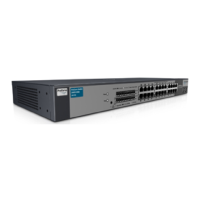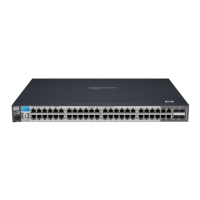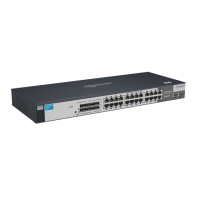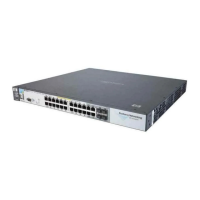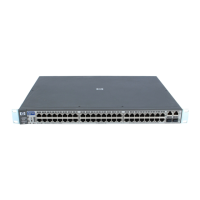6-11
Quality of Service (QoS): Managing Bandwidth More Effectively
Introduction
precedence supersedes VLAN precedence, all TCP port 80 packets on VLAN
100 will be set to normal priority. For a type precedence listing, see table 6-4,
‘‘Switch Type Search Order and Precedence’’, on page 6-10.
Table 6-5. Precedence Criteria for QoS types
Precedence Criteria Overview
1 UDP/TCP Takes precedence based on a layer 4 UDP or TCP application, with a user-specified application
port number (for example, Telnet). Default state: Disabled
If a packet does not meet the criteria for UDP/TCP priority, then precedence defaults to the Device Priority
type, below.
2 Device
Priority
(IP
Address)
Takes precedence based on an inbound packet having a particular destination or source IP
address. QoS applies the following IP address limits:
• Up to 60 IP addresses
If a given packet has a destination IP address matching a QoS configuration, this packet takes
precedence over another packet that has the matching IP address as a source address. (This
can occur, for example, on an outbound port in a switch mesh environment.) Also, if the source
and destination IP addresses (SA and DA) in the same packet match for different QoS policies,
the DA takes precedence. Default state: No IP address prioritization.
If a packet does not meet the criteria for device priority, then precedence defaults to the IP Type of Service
(ToS) type, below.
3 IP Type-
of-
Service
(IP ToS)
Takes precedence based on the TOS field in IP packets. (Applies only to IP packets.) The ToS
field is configured by an upstream device or application before the packet enters the switch.
• IP Precedence Mode: QoS reads an inbound packet’s IP precedence (upper three) bits in
the Type-of-Service (ToS) byte and automatically assigns an 802.1p priority to the packet (if
specified in the QoS configuration) for outbound transmission.
• Differentiated Services (Diffserve) Mode: QoS reads an inbound IP packet’s differentiated
services, or codepoint (upper six), bits of the Type-of-Service (TOS) byte. Packet
prioritization depends on the configured priority for the codepoint. (Some codepoints default
to the DSCP standard, but can be overridden.)
For more on IP ToS, see “QoS IP Type-of-Service (ToS) Policy and Priority” on page 6-33. Default
state: Disabled.
If a packet does not meet the criteria for ToS priority, then precedence defaults to the VLAN type
4VLAN
Priority
Takes precedence based on the ID number of the VLAN in which the inbound packet exists.
For example, if the default VLAN (VID = 1) and the “Blue” VLAN (with a VID of 20) are both
assigned to a port, and Blue VLAN traffic is more important, you can configure QoS to give Blue
VLAN traffic a higher priority than default VLAN traffic. (Priority is applied on the outbound
port.) Default state: No-override.
If a packet does not meet the criteria for VLAN priority, then precedence defaults to the Interface (Source-
Port) type, below.
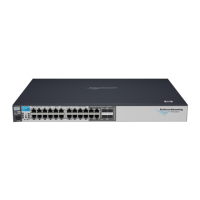
